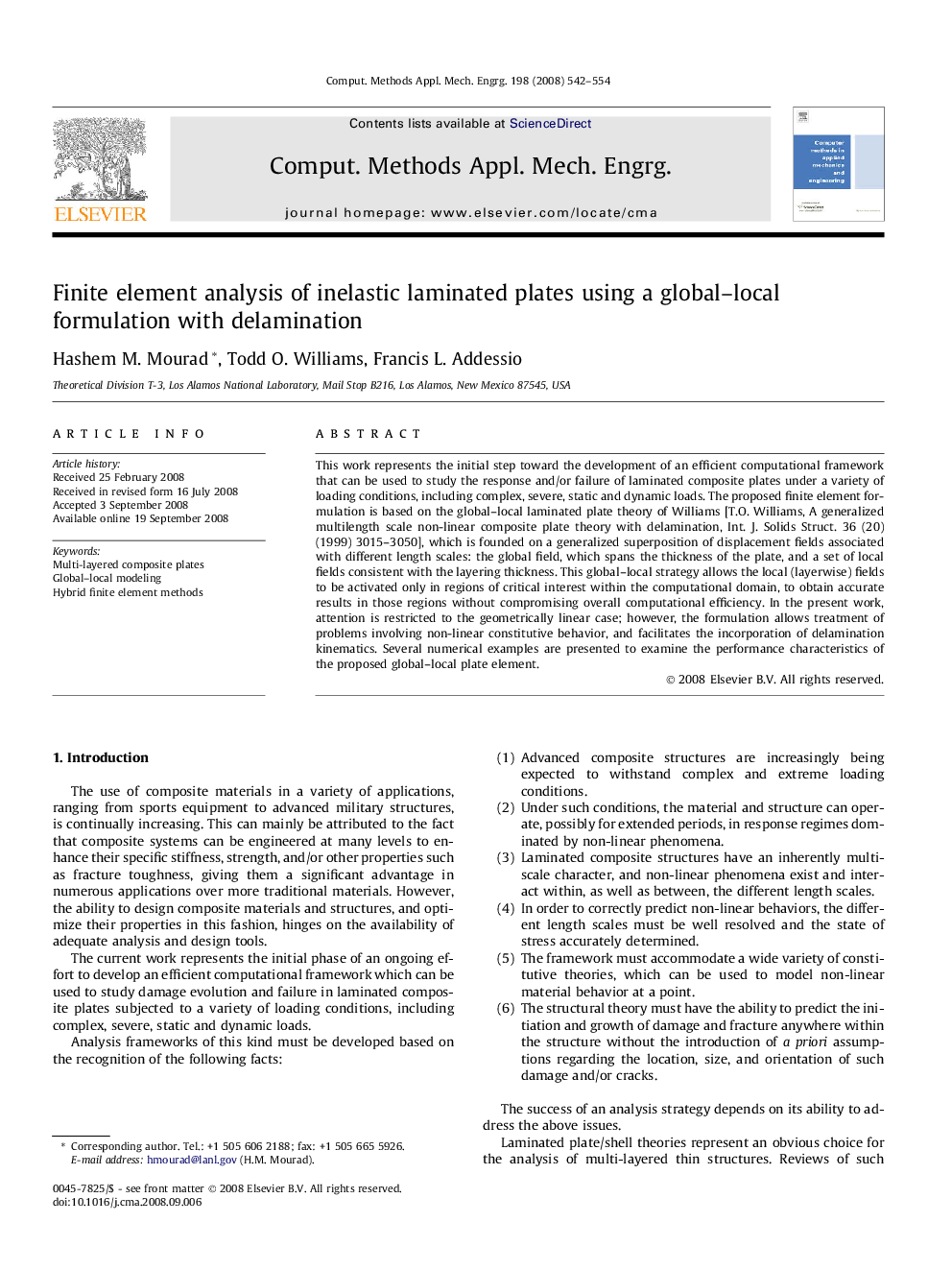| Article ID | Journal | Published Year | Pages | File Type |
|---|---|---|---|---|
| 499353 | Computer Methods in Applied Mechanics and Engineering | 2008 | 13 Pages |
This work represents the initial step toward the development of an efficient computational framework that can be used to study the response and/or failure of laminated composite plates under a variety of loading conditions, including complex, severe, static and dynamic loads. The proposed finite element formulation is based on the global–local laminated plate theory of Williams [T.O. Williams, A generalized multilength scale non-linear composite plate theory with delamination, Int. J. Solids Struct. 36 (20) (1999) 3015–3050], which is founded on a generalized superposition of displacement fields associated with different length scales: the global field, which spans the thickness of the plate, and a set of local fields consistent with the layering thickness. This global–local strategy allows the local (layerwise) fields to be activated only in regions of critical interest within the computational domain, to obtain accurate results in those regions without compromising overall computational efficiency. In the present work, attention is restricted to the geometrically linear case; however, the formulation allows treatment of problems involving non-linear constitutive behavior, and facilitates the incorporation of delamination kinematics. Several numerical examples are presented to examine the performance characteristics of the proposed global–local plate element.
